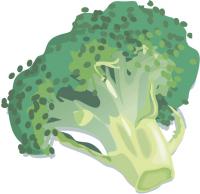Content may contain advertising or affiliate links.
Dietary fiber is often considered one of the key players in maintaining good nutrition, helping people reach healthy weight by expediting fat through your digestive system faster. Fiber can also assist in lowering cholesterol levels to protect against heart disease, and helping gastrointestinal health by reducing constipation and hemorroids.
Unfortunately, however, most people do not consume enough dietary fiber daily, yet this key element remains one of necessary parts of our meal plans. This article will cover just a few high fiber foods from several categories.

Fruits
Apples are not only a popular fruit but also a fantastic source of fiber. They contain both soluble and insoluble fiber, making them a great choice for maintaining a healthy digestive system. Additionally, the skin of apples is rich in antioxidants, further enhancing their nutritional value.
Berries such as raspberries, blackberries, and strawberries are not only bursting with flavor but also pack a fiber punch. These colorful fruits are rich in vitamins, minerals, and antioxidants, making them an excellent choice for a healthy snack or addition to your morning cereal or smoothie.
Pears are not only juicy and delicious but also a fantastic source of dietary fiber. Consuming a pear with its skin intact can provide a substantial amount of fiber, promoting digestive health and aiding in weight management. Pears are also a good source of vitamins C and K, making them a nutritious choice.
Known for their high vitamin C content, oranges are also a great source of dietary fiber. The fiber in oranges helps regulate blood sugar levels and promotes a healthy digestive system. Enjoy oranges as a snack, instead of orange juice, for a fiber-rich addition to your diet.
Avocados are not only creamy and delicious but also packed with fiber. They are a unique fruit (or vegetable to some) that contains both soluble and insoluble fiber, contributing to a healthy digestive system. Avocados are also a good source of healthy fats, vitamins, and minerals, making them a nutritious choice for adding to salads, sandwiches, or enjoying as guacamole.

Vegetables
Broccoli is a versatile vegetable that not only provides a significant amount of dietary fiber but is also loaded with vitamins, minerals, and antioxidants. Incorporating broccoli into your meals can help promote healthy digestion and support a strong immune system.
Packed with fiber, spinach is a leafy green vegetable that offers numerous health benefits. It is also an excellent source of iron, calcium, and vitamins A and C. Including spinach in your diet can aid in maintaining a healthy weight and reducing the risk of chronic diseases.
Often overlooked, Brussels sprouts are a powerhouse of fiber and essential nutrients. These mini-cabbages are not only rich in fiber but also contain antioxidants and vitamin K. Adding Brussels sprouts to your meals can help improve digestion and support healthy bones.
Carrots are not only known for their high vitamin A content but are also an excellent source of dietary fiber. Many people are unaware of their high fiber content. Incorporating carrots into your diet can promote good vision, boost immunity, and improve digestion.
Not only does asparagus add a touch of elegance to your plate, but it also brings a substantial amount of fiber to the table. One cup of cooked asparagus contains approximately 4 grams of fiber, making it a valuable addition to a high-fiber diet. Beyond its fiber content, asparagus is loaded with vitamins A, C, and K, as well as folate, which supports healthy brain function and helps prevent birth defects.
The vibrant and earthy beets are another high fiber food that deserves a spot on your plate. One cup of cooked beets provides around 3.5 grams of fiber, along with essential nutrients like vitamin C, potassium, and manganese. Beets are also known for their potential to lower blood pressure, improve athletic performance, and support liver health.
As the iconic symbol of fall, pumpkin is more than just a decoration or a flavor for lattes. This vibrant orange gem is a fantastic source of dietary fiber. Just one cup of cooked pumpkin contains around 7 grams of fiber, making it a great addition to your diet. Additionally, pumpkin is rich in vitamins A and C, potassium, and antioxidants, which support eye health, boost immunity, and fight inflammation.
Legumes
Black beans are a popular choice when it comes to high fiber legumes. With approximately 15 grams of fiber per cooked cup, they pack a powerful punch. These versatile legumes can be used in a range of dishes, such as soups, salads, or even as a base for vegetarian burgers. Incorporating black beans into your diet can boost your fiber intake and provide you with a satisfying and nutritious meal.
Lentils, often referred to as the nutritional powerhouse, are another fantastic source of fiber. One cup of cooked lentils contains around 15 grams of fiber, making them an excellent choice for those looking to increase their fiber intake. Lentils come in various colors, including green, red, and black, each offering a slightly different taste and texture. From lentil soups and stews to lentil-based salads, the possibilities are endless with these high fiber legumes.
Chickpeas, also known as garbanzo beans, are not only high in fiber but also rich in plant-based protein. With approximately 12.5 grams of fiber per cooked cup, they are a fantastic addition to any diet. Chickpeas can be used in a multitude of recipes, such as hummus, curries, or even roasted as a healthy snack. Incorporating these high fiber legumes into your meals can provide you with a satisfying and nutritious boost.
Split peas are a lesser-known legume but are undoubtedly worth mentioning when discussing high fiber options. With around 16 grams of fiber per cooked cup, split peas are an excellent choice for those seeking a fiber-rich diet. They are commonly used in soups and stews, adding a delightful texture and flavor while offering numerous health benefits.

Whole Grains
Whole grains provide both soluble and insoluble fiber, the former dissolving in water to lower cholesterol while the latter providing bulk in the stool and helping prevent constipation. You’ll find both types in foods like barley, oatmeal, wheat cereals, rye bread, brown rice and whole grain pasta.
Ancient grains such as quinoa, amaranth, and sorghum provide an excellent source of protein, helping build muscle while managing weight and maintaining health. Furthermore, these ancient grains may even be gluten-free, providing another great choice for those living with Celiac disease. These are good choices to try because they are generally not refined.
High fiber whole grains are a group of nutrient-dense foods that contain the entire grain kernel, including the bran, germ, and endosperm. Unlike refined grains, which have undergone processing that removes these nutritious components, whole grains retain their natural goodness, making them an excellent source of dietary fiber. This fiber content is what sets them apart and provides numerous health benefits.

Seeds And Nuts
Seeds like chia, flax, sunflower and pumpkin seeds provide a high fiber intake as well as other vital vitamins, minerals, healthy fats and more. Add them to salads, grain bowls, smoothies and yogurt dishes or trail mix as an easy way to increase fiber in your diet.
Seeds are an excellent source of omega-3 fatty acids and lignans, plant compounds known to help reduce inflammation and support cardiovascular health. A quarter cup of roasted pumpkin seeds (known as pepitas) provides 5 grams of fiber.
Almonds, a beloved nut in many households, are not only tasty but also an excellent source of fiber. With approximately 3.5 grams of fiber per ounce, almonds can contribute significantly to your daily fiber intake. Incorporating a handful of almonds into your diet can provide a satisfying crunch while boosting your fiber consumption.
Pistachios, known for their vibrant green color and unique flavor, are another nut variety that is high in fiber. These little green gems contain around 3 grams of fiber per ounce. Snacking on pistachios can not only satisfy your cravings but also help you meet your daily fiber goals.
Walnuts, often recognized for their brain-boosting properties, are also a great source of dietary fiber. With approximately 2 grams of fiber per ounce, incorporating walnuts into your meals or snacks can provide an added nutritional punch. Their buttery texture and distinct flavor make them a perfect addition to salads, oatmeal, or even as a standalone snack.
Including high fiber foods in your diet is a simple yet effective way to improve your overall health. With their numerous benefits, ranging from better digestion to heart health and weight management, these foods should be a staple in everyone’s meal plan.
